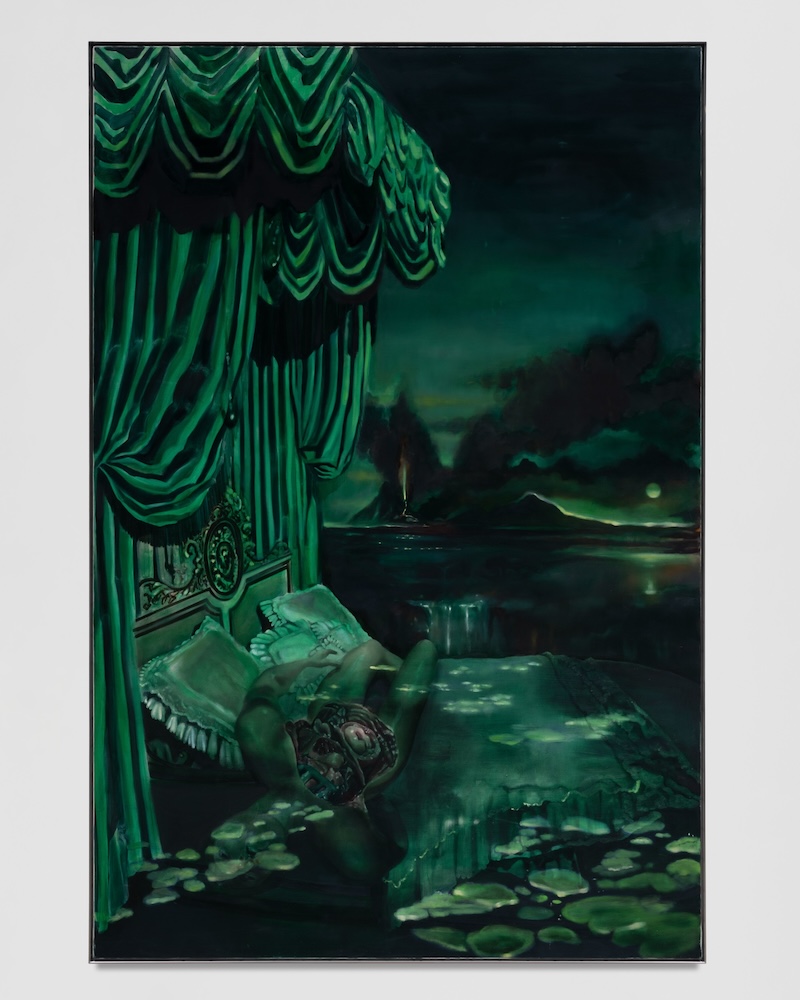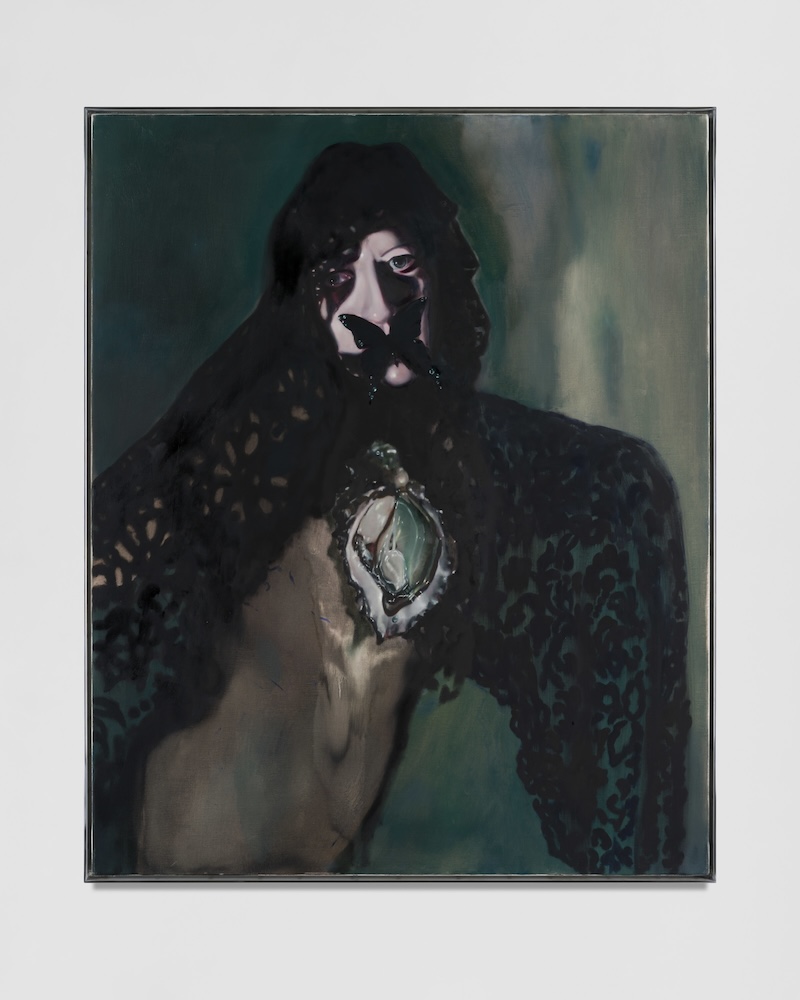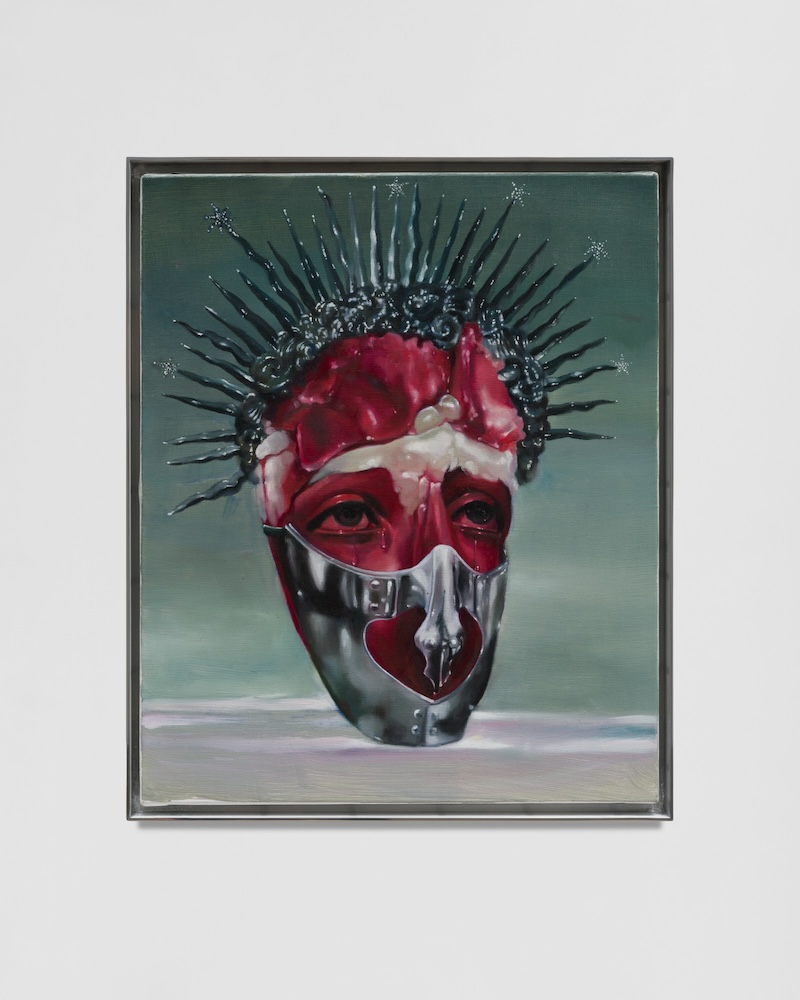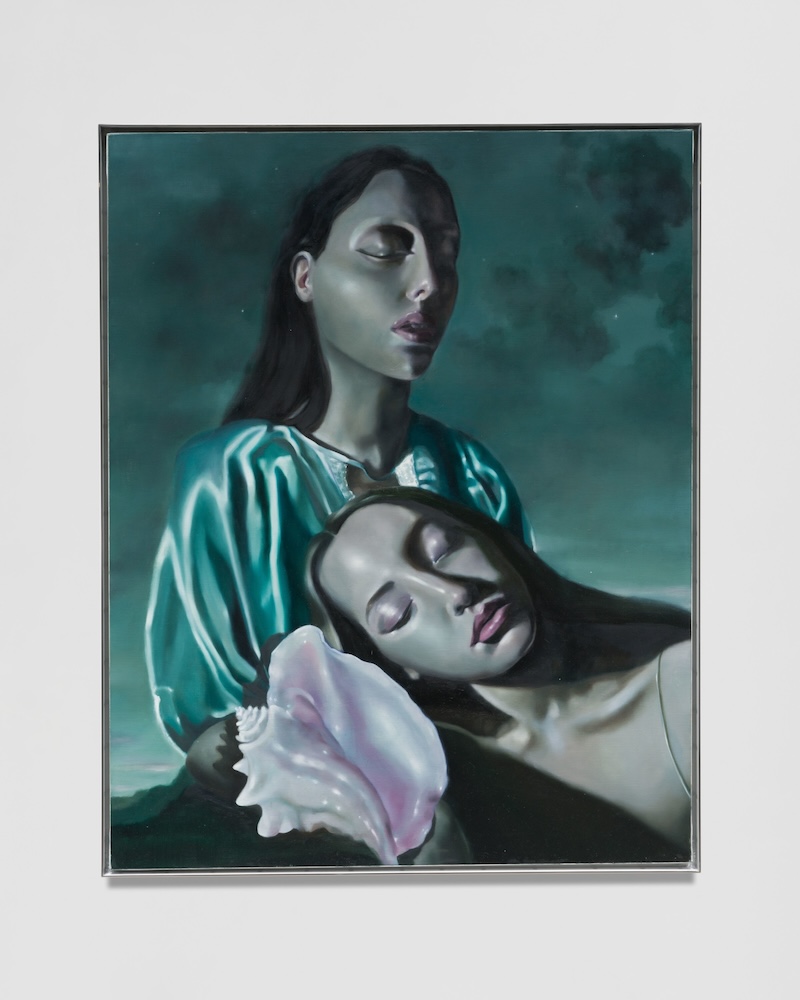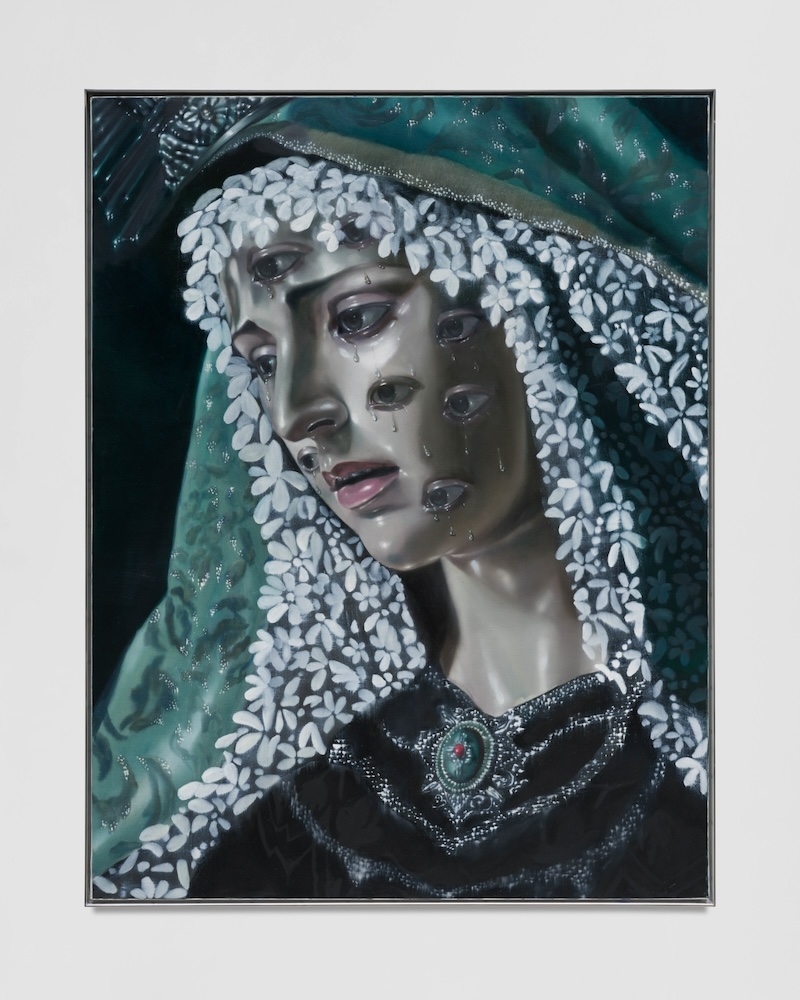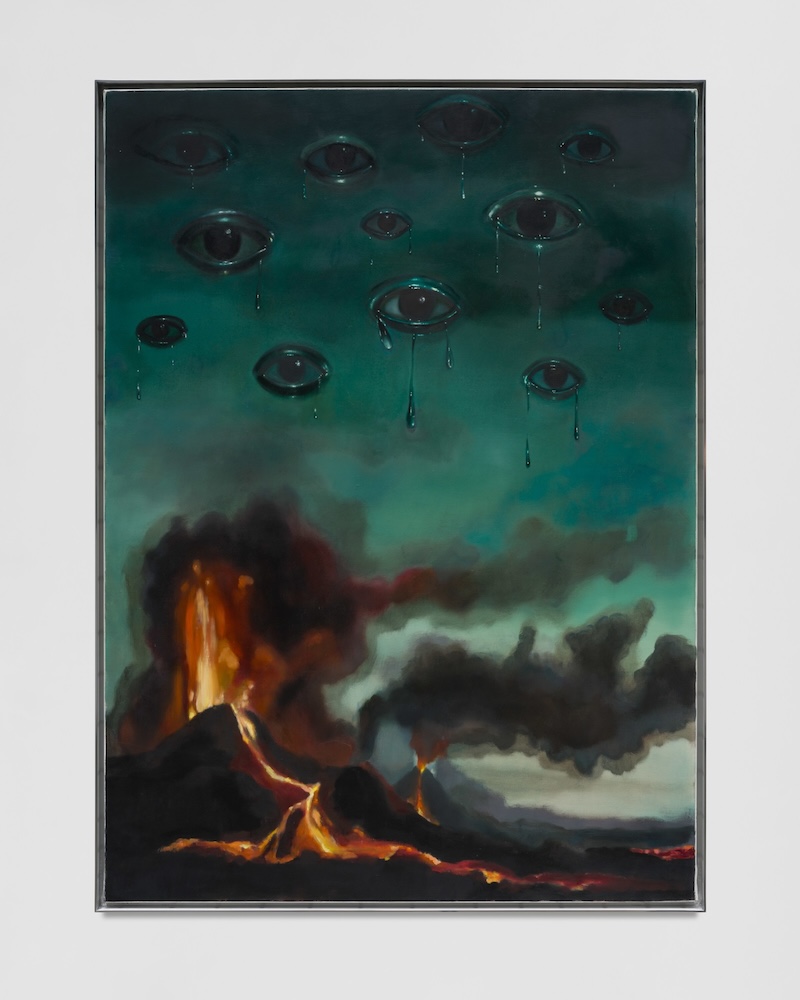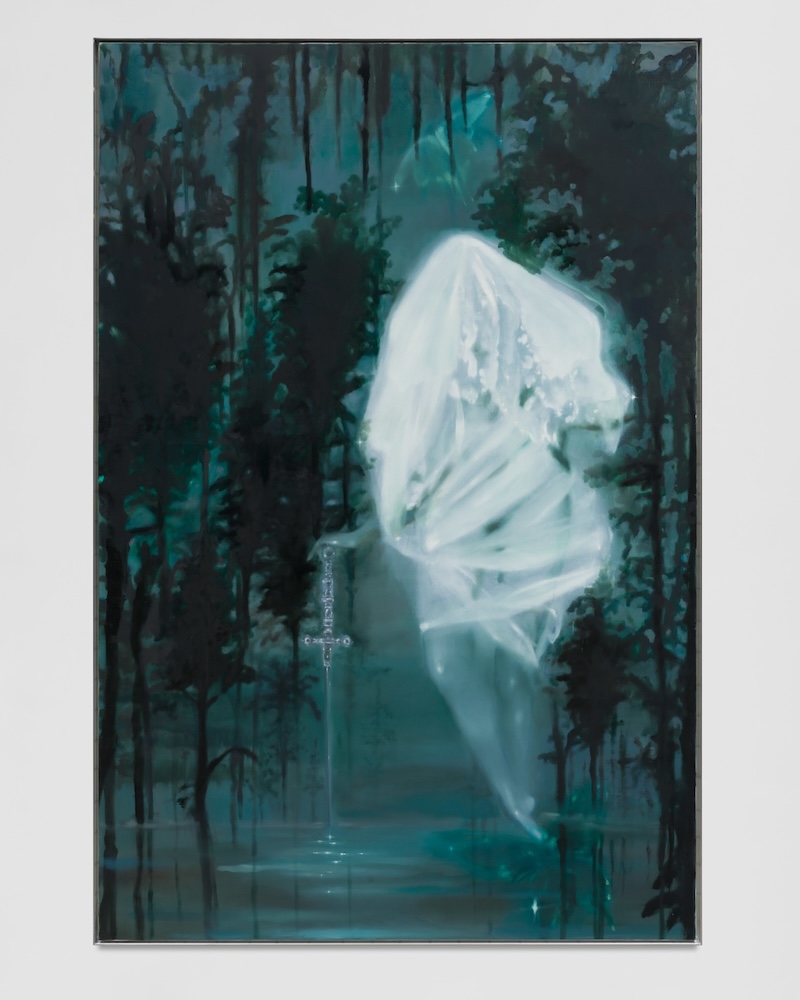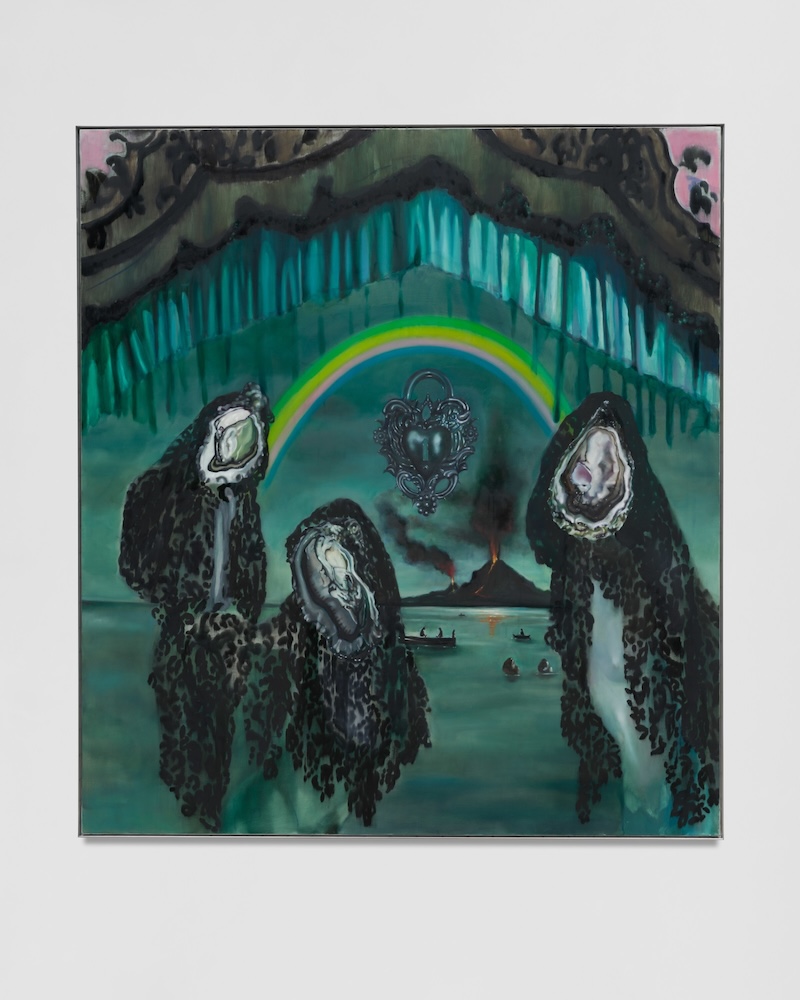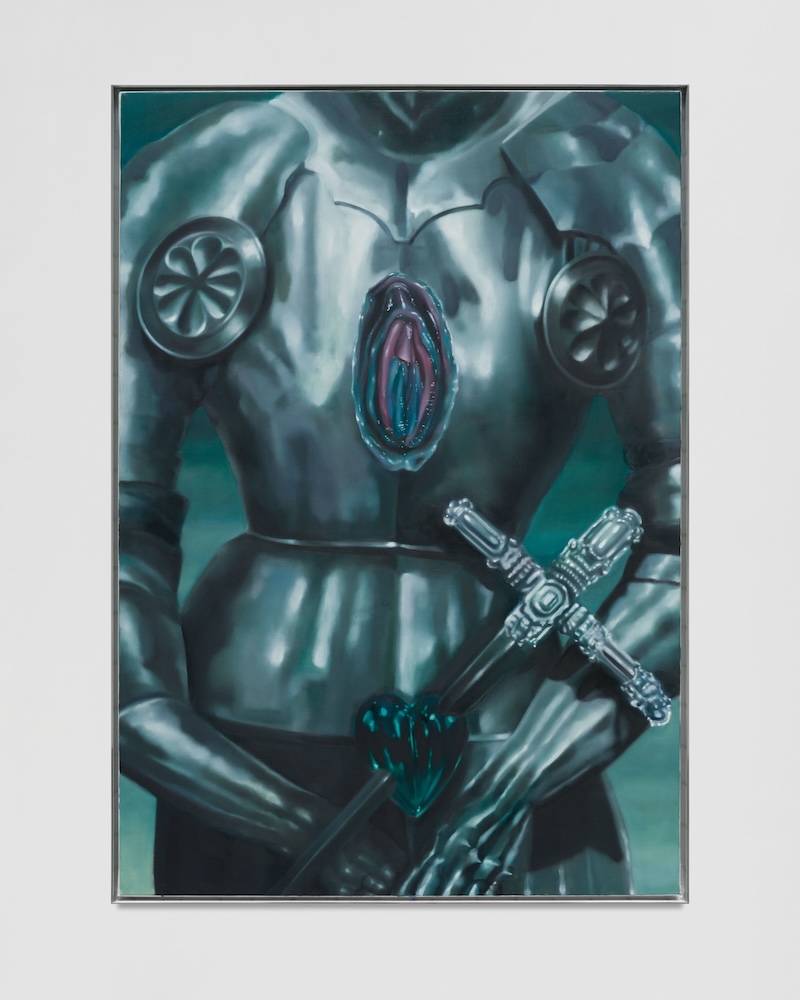When was the last time you felt a tremor? In this anthropomorphic visual journey, artist Tali Lennox enlists erupting volcanoes, glowing forests and mystical landscapes to explore the pleasure of submitting to the chaos and the power of nature. The phantasmagoric collection finds a range of female bodies in varying states of capitulation to an onslaught of mother nature's harshest elements, finding common ground between internal and external states of disorder.
Originally inspired by the German anthology of illuminations Das Wunderzeichenbuch: The Book of Miracles, this collection takes the lead from the book of Renaissance paintings that depict both biblical and folkloric tales with a decidedly apocalyptic flair. In her first solo exhibition with Nicodim, Lennox builds on this uniquely sanguine approach to natural disasters, imbuing her canvases with a dark spirituality that is sometimes terrifying, sometimes spectacular.
At the onset of the collection a luminous shell hovers mysteriously above two figures in hypnagogic repose, inviting the viewer to suspend reality and consider the surrealist possibilities susurrating to us from within the conch. Shells and oysters continue to proliferate the canvases, appearing sometimes as ominous hallucinations and at other times morphing directly into the features of the painting's subjects, symbolsing a surrender and a fusing to nature. Oysters, mussels and shells have special symbolic meaning: communicating an ability to siphon energy from and exist in symbiosis with nature. They also represent balance, strength and the pleasure of truly knowing oneself gained from introspection and self-analysis.
Lennox does not conceal the innate sexuality found in the form of the oyster and instead celebrates the erotic parallels between natural form and the human body evoked in the cracked open shell. Tears are free flowing throughout, yet their presence is cathartic instead of pitiful, expressing a climactic release of feeling and tension that celebrates emotional intensity. The connection between feminine power and nature is absorbed into the fiber of the work, where the potency of feminine desire and a celebration of fetishistic impulses are blended with the savage wisdom of mother nature without distinction. Bubbling volcanoes, fiery lava and inescapably dark forests are depicted with forbidding detachment, silently declaring that you cannot have beauty without bedlam.
With the use of shells, oceanic abysses and a striking image of a form shrouded in a luminous white cocoon deep in a forest undergrowth, Lennox summons the spirits of Aphrodite and Demeter. Aphrodite, goddess of love, lust, beauty, pleasure and passion is closely linked to the ocean, having been birthed from violent sea foam. Her sacred colors are white and red that dominate the collection and consecrate the fear and wonder of nature that is explored throughout. An eervescent green also haunts large swathes of canvas and is the sacred color of Demeter, goddess of agriculture and nature. It is said that Demeter would give life after death to those who learned her mysteries and the ghostly green expanses that spread like a thin fog seem to reiterate her ancient whisper to aspire to this greater knowledge.
Dense with reference, symbolism and suggestion, the collection is a pandora's box of magical realism, mythology and folklore. Blending the medieval with the modern, Lennox ponders the human condition and our never ending obsession with the end of times. By confronting the catastrophic environmental upheaval one senses overwhelming the collective psyche, the ultimate helplessness and fragility of mankind at the hands of earthly rotations is put in the spotlight. Walking the line between dream and reality, bodies are mutated and distorted, organs are nonchalantly exposed and suits of armor are pierced with prismatic light.
Lennox presents a unique and vivid study in the tension between constraint and release and pleasure and pain that serves ultimately as a spiritual hymn to both the destructive and restorative properties of nature. Tremors takes the viewer on a hallucinatory journey with a body of work that beckons from a world that could be at once a utopia or an apocalypse. But there is no need to be scared. After all, life is but a dream. — Katie Victoria Brown
https://www.nicodimgallery.com/



